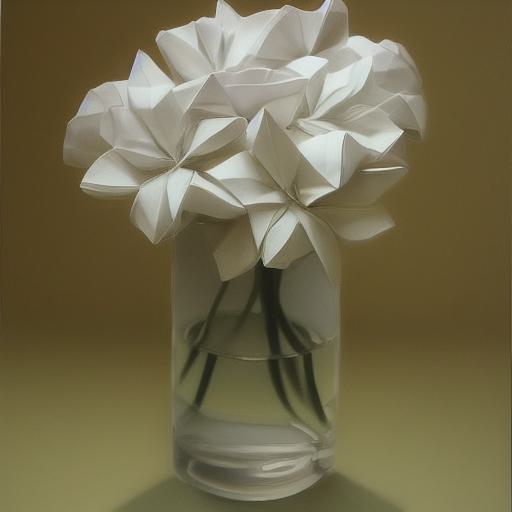Origami craft
Origami is the Japanese art of paper folding, which involves transforming a flat square of paper into a finished sculpture through folding and sculpting techniques. The word Origami comes from the Japanese words “oru” which means to fold, and “kami” which means paper.
Origami has been practiced for centuries in Japan and has gained popularity worldwide in recent years as a form of artistic expression, as well as a fun and educational craft for people of all ages. Origami projects can range from simple designs such as a paper crane or a paper boat, to more complex designs such as animals, flowers, and even modular structures.
Folding techniques of origami
One of the unique aspects of origami is the use of a single sheet of paper with no cutting, gluing, or taping involved in the process. This requires precise folding techniques and attention to detail to create the desired design. The art of origami also focuses on the concepts of symmetry, proportion, and balance, and can provide a calming and meditative experience for those who practice it.
Origami can be enjoyed by people of all ages and skill levels, and there are many resources available online and in books for learning and creating origami projects. Whether you’re looking for a fun activity to do with children or a new hobby to explore, origami is a wonderful craft that can provide hours of entertainment and creative expression.
What is artificial intelligence (AI)?
Art generated by artificial intelligence (AI) refers to a form of artwork that is produced through the use of algorithms and machine learning techniques. This approach offers numerous benefits over traditional methods, such as the ability to experiment with various styles and techniques quickly and efficiently, as well as the capacity to produce designs that meet specific requirements. Furthermore, AI-generated art promotes diversity and inclusivity within the art industry by providing a platform for artists from different backgrounds to express their unique experiences and perspectives.
Using online tools like Visual Paradigm Online, designers can easily incorporate AI-generated art into their projects. Additionally, artists can create their own AI-generated art and explore the vast creative possibilities that this technology provides through websites such as Stable Diffusion, Midjourney, and Dalle 2.
How to create this prompt?
To write a prompt for AI-generated art, it’s important to include specific details that will guide the algorithm towards producing a desired outcome. The prompt for the image of “the vase with paper flowers inside the vase” provides several elements that will influence the final image.
Firstly, the prompt specifies that the vase contains paper flowers, indicating that the algorithm should produce an image of a vase with flowers made of paper. This provides a specific visual cue for the algorithm to follow.
Additionally, the prompt specifies that the image should be photorealistic, indicating that the final image should resemble a photograph rather than a hand-drawn or stylized image. This sets the tone for the level of detail and realism that the algorithm should strive for.
Finally, the prompt includes details about the flowers being paper origami flowers, as well as referencing Japanese flower arrangements. This provides cultural and artistic references that can influence the design and composition of the image, such as using specific color schemes or arranging the flowers in a certain way.
Overall, the prompt for the image of “the vase with paper flowers inside the vase” provides specific visual cues and references that guide the algorithm towards producing a photorealistic image of a vase with paper origami flowers arranged in a way that reflects Japanese flower arrangement styles. By including these specific details, the prompt helps to shape the final image and ensure that it meets the desired aesthetic and cultural references.


